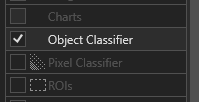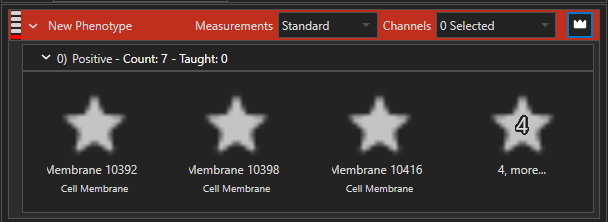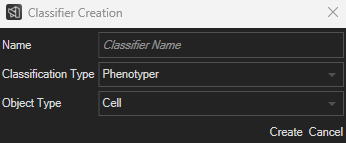Aivia Software
Phenotyper view
Gallery
The gallery shows a thumbnail of all objects on the image as well as the thumbnails of any objects that are taught during the current session. The gallery separates the thumbnails by phenotypes indicated by a colored header. Each Phenotype header has measurement and exclusivity selection. Standard measurements refer to channel mean intensity measurements and custom measurements refer to different morphological/spatial/intensity measurements. By toggling the exclusivity button , negative class is added/removed for the phenotype.
You can expand/collapse each phenotype separately. In the collapsed view, a generic icon (on the right) indicates the number of additional thumbnails/objects that are in the class. Clicking on the generic icon will fully expand the current class and collapse all others.









